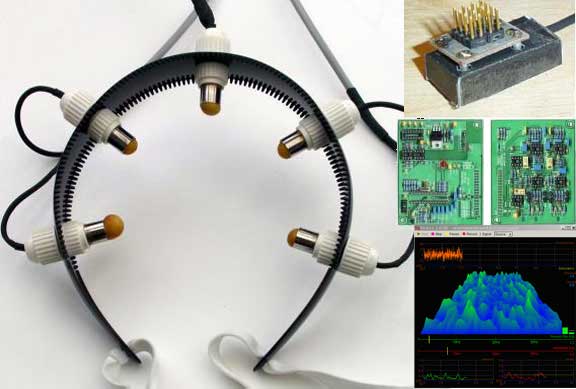
About MT/V5 Organization
- ,
- ,
- and
MT/V5 in human and macaque cortex are homologous
Kolster H, Peeters R, Orban GA.
J Neurosci. 2010 Jul 21; 30(29):9801-20.
J Neurosci. 2010
Review Cortical connections of MT in four species of primates: areal, modular, and retinotopic patterns.
Vis Neurosci. 1990
Review Cortical connections of MT in four species of primates: areal, modular, and retinotopic patterns.
Krubitzer LA, Kaas JH. Vis Neurosci. 1990 Aug; 5(2):165-204.
Vis Neurosci. 1990
Review Cortical connections of MT in four species of primates: areal, modular, and retinotopic patterns.
Krubitzer LA, Kaas JH. Vis Neurosci. 1990 Aug; 5(2):165-204.
MT/V5 corresponds to motion
http://web.me.com/john.tsotsos/Motion/Human_Experimental_Studies.html
http://web.me.com/john.tsotsos/Motion/Human_Experimental_Studies.html
Martinez-Trujillo, J.C., Cheyne, D., Gaetz, W., Simine, E., Tsotsos, J.K., Activation of area MT/V5 and the right inferior parietal cortex during the discrimination of transient direction changes in translational motion, Cerebral Cortex, 2007 Jul;17(7):1733-9. Epub 2006 Sep 29.
Martinez-Trujillo, J.C., Tsotsos, J.K., Simine, E., Pomplun, M., Wildes, R., Treue, S., Heinze, H.-J., Hopf, J.-M., Selectivity for Speed Gradients in Human Area MT/V5,NeuroReport 16(5):435-438, 2005 Apr 4.
Distinguishing subregions of the human MT+ complex using visual fields and pursuit eye movements.
J Neurophysiol. 2001
Distinguishing subregions of the human MT+ complex using visual fields and pursuit eye movements.
Dukelow SP, DeSouza JF, Culham JC, van den Berg AV, Menon RS, Vilis T. J Neurophysiol. 2001 Oct; 86(4):1991-2000.
J Neurophysiol. 2001
Distinguishing subregions of the human MT+ complex using visual fields and pursuit eye movements.
Dukelow SP, DeSouza JF, Culham JC, van den Berg AV, Menon RS, Vilis T. J Neurophysiol. 2001 Oct; 86(4):1991-2000.
by Matthew C Hagen, Ove Franzen, Francis McGlone, Greg Essick, Christopher Dancer, Jose V Pardo
European Journal of Neuroscience (2002)
Volume: 16, Issue: 5, Publisher: Oxford, UK: Published on behalf of the European Neuroscience Association by Oxford University Press, c1989-, Pages: 957-964






